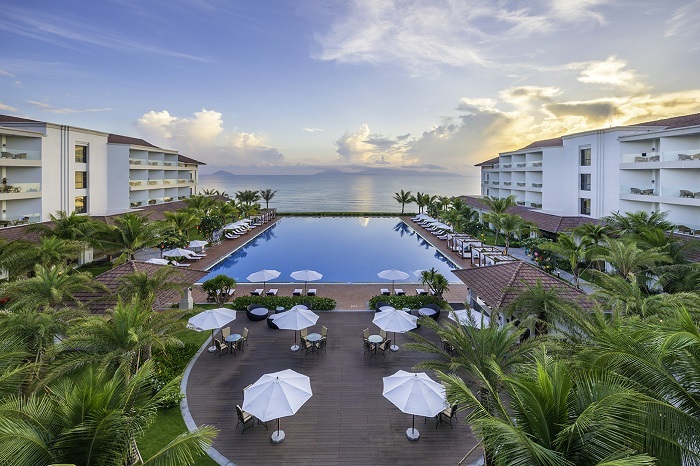Located in the center of the old town, Cam Pho communal house is one of the most popular check-in addresses in Hoi An.
Cam Pho village, formed at the end of the 15th century, is the oldest communal house in Hoi An. Up to now, the communal house has undergone two renovations, the first time in 1817 and the second time in 1897. In the early days of its establishment, the communal house was a place to worship Thanh Hoang, Mrs. Dai Can, the river gods and one number of guardian deities for the village. In the second renovation, the communal house worshiped the predecessors and late sages. At this time, people called the communal house “Cam Pho Huong Hien”.
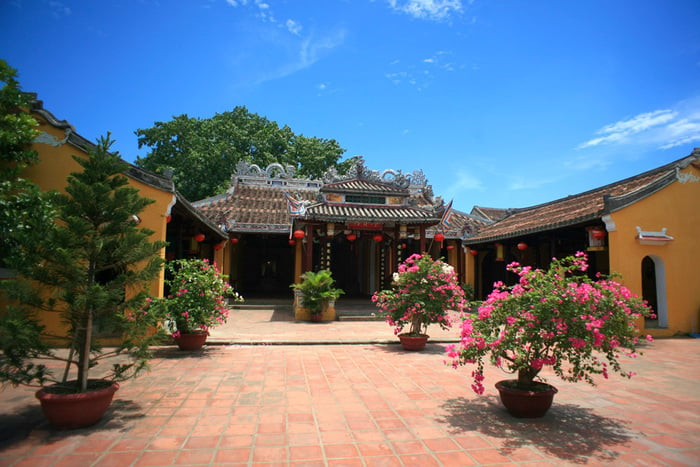
Before the 19th century, the territory of Cam Pho village extended from Ong Da sluice to Con Chai, from Truong Le to Cam Nam. With a large area and densely populated, the village made a great contribution to the prosperity of the commercial port of Hoi An at that time.
Cam Pho communal house is a typical Vietnamese communal house with a space of banyan trees, water wharf, and communal yard that has been associated with generations and imprinted in poetry. The communal house has an area of up to 1125m2, built in the East – South direction. The whole project creates a unique “Quoc” shape.
Cam Pho Communal House welcomes visitors with a three-way gate built entirely of spacious and sturdy bricks, named “Cam Pho Huong Hien”. The top of the two pillars represent two blooming lotus buds and two large spheres.
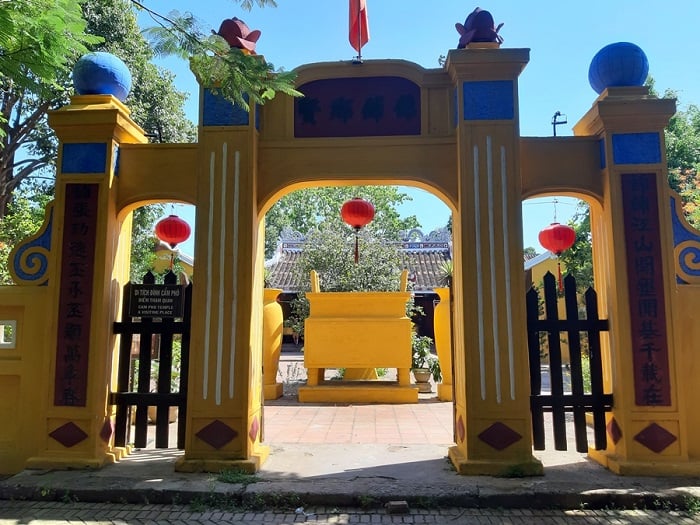
The highlight of the project is located in the main hall, in front of the main hall is the vestibule built in the style of 4 roofs, on both sides of the main hall are two three-room East – West compartments.
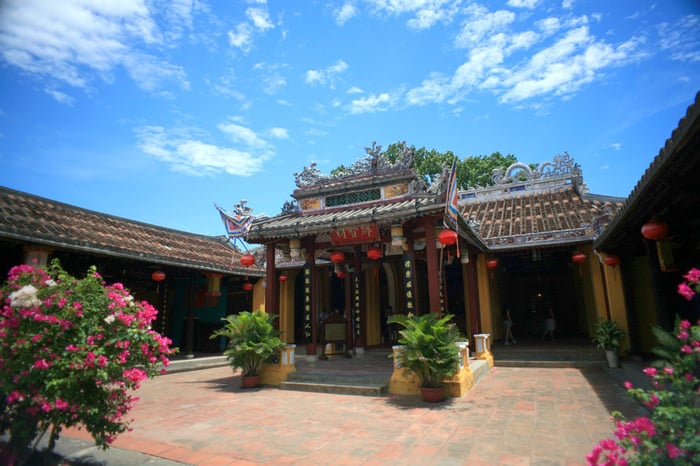
The main hall is divided into 5 compartments, each compartment is separated by columns and high walls touching the roof, forming a semicircular walkway. The three middle compartments are the places where the incense table is meticulously carved and detailed.
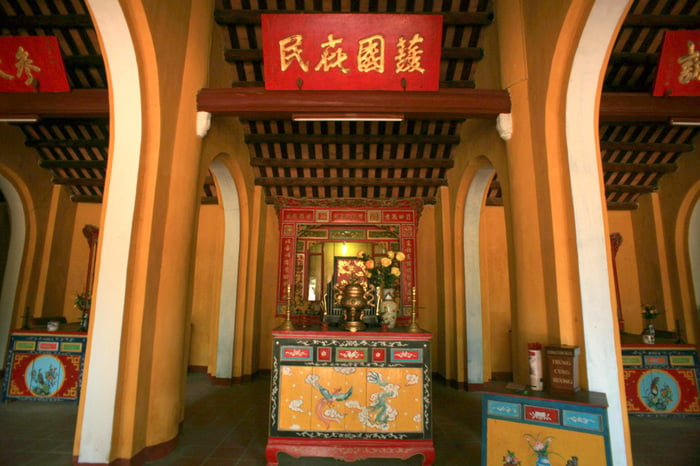
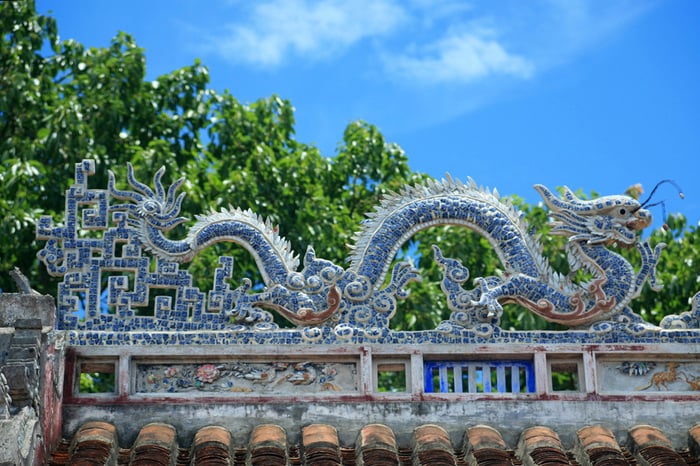
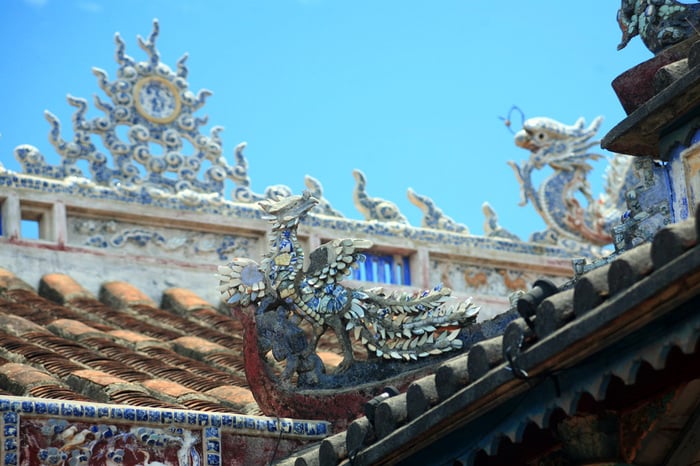
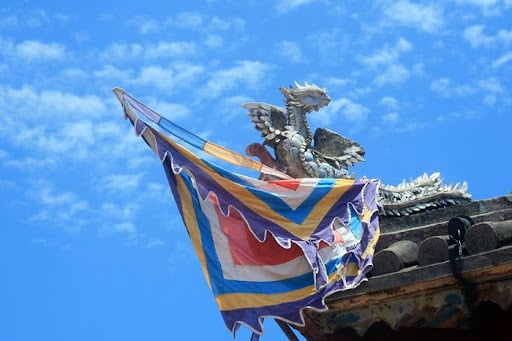
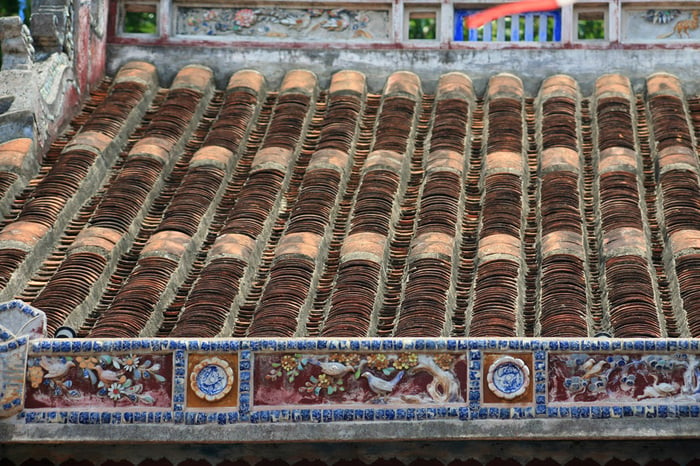
The Long Chu procession is one of the unique festivals of Hoi An, taking place on the 15th day of the 7th lunar month every year in the coastal villages located in the town. This is also known as the dragon boat festival, with the meaning of procession of kings and generals to protect people from evil spirits and diseases. Long Chu is carefully crafted from bamboo by skilled artisans, beautifully decorated at both ends of the boat and tied with dolls, flags, and parasols inside.
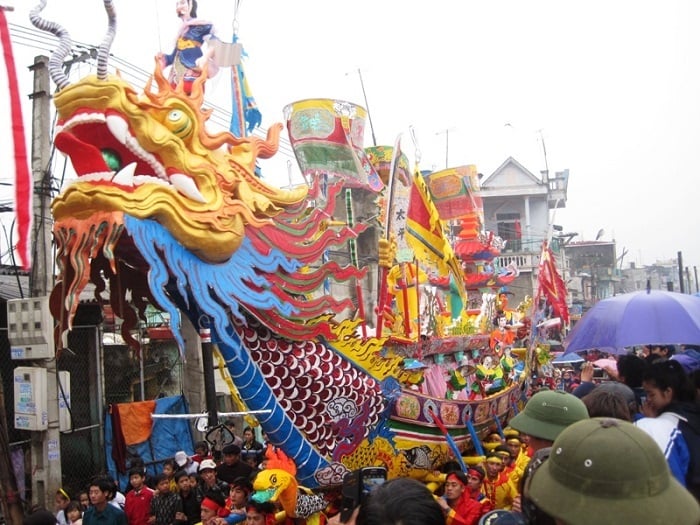 Long Chu procession – famous festival in Hoi An
Long Chu procession – famous festival in Hoi An
The ceremony is performed by sorcerers, and people will light firecrackers waiting for the procession of Long Chu and then ask for amulets to wear in front of the house to ward off evil spirits. The Long Chu procession is solemnly held, not only having spiritual meaning but also helping to unite the Hoi An town community for many years.
In addition, twice a year, Cam Pho communal house also organizes the spring and autumn festival on January 16 and August 16 of the lunar calendar. Visitors who have the opportunity to visit Cam Pho Hoi An should not miss these holidays.
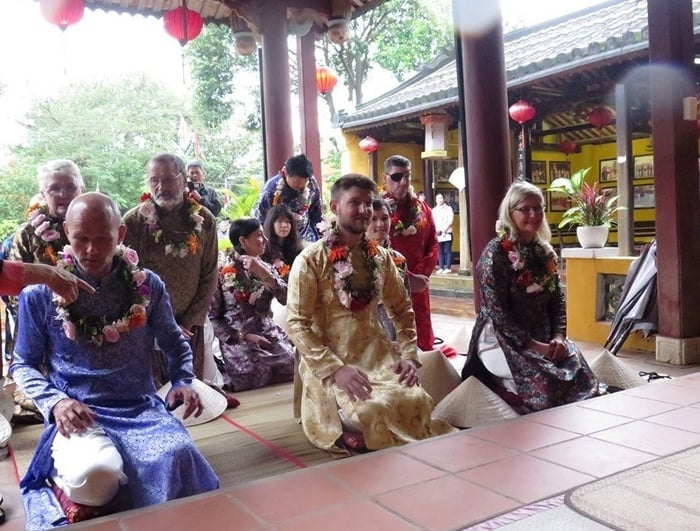 The Cam Pho communal house festival at the beginning of the year not only attracts Vietnamese people but also foreign tourists
The Cam Pho communal house festival at the beginning of the year not only attracts Vietnamese people but also foreign tourists
In addition to Cam Pho communal house, Hoi An also attracts tourists by many other beautiful places such as: My Son Sanctuary, Hoi An Ancient Town, VinWonders South Hoi An, Cua Dai Beach, Cu Lao Cham,…
To have a complete trip to Quang Nam – Hoi An and convenient to travel to many places, visitors should choose a place to stay with a prime location and quality services such as Vinpearl Resort & Spa Hoi An. Located on Cua Dai beach, the villas here are designed with wide domes, large spacious verandas and close to nature.
In particular, the system of outstanding facilities and services such as the largest outdoor infinity pool in Hoi An city, a restaurant serving Quang specialties, a modern gym and yoga room,… will make guests feel comfortable and comfortable during their stay.
